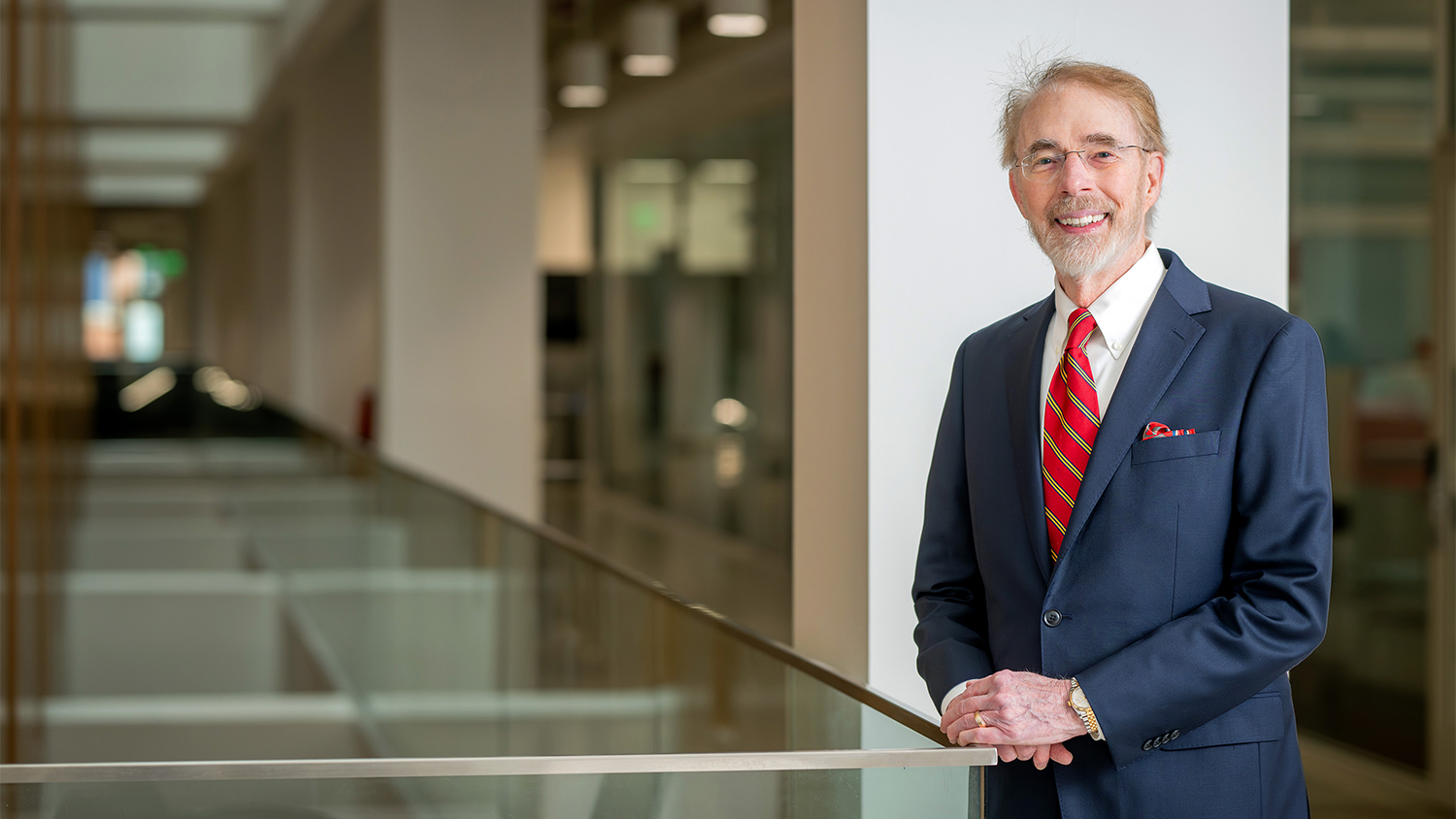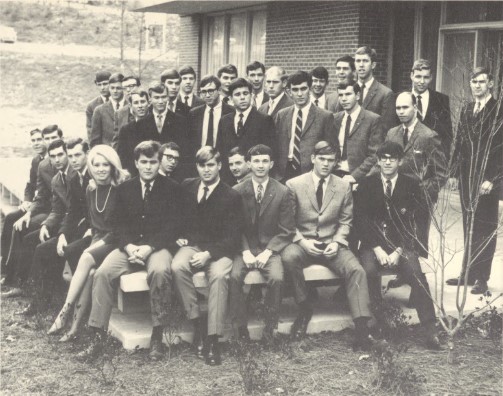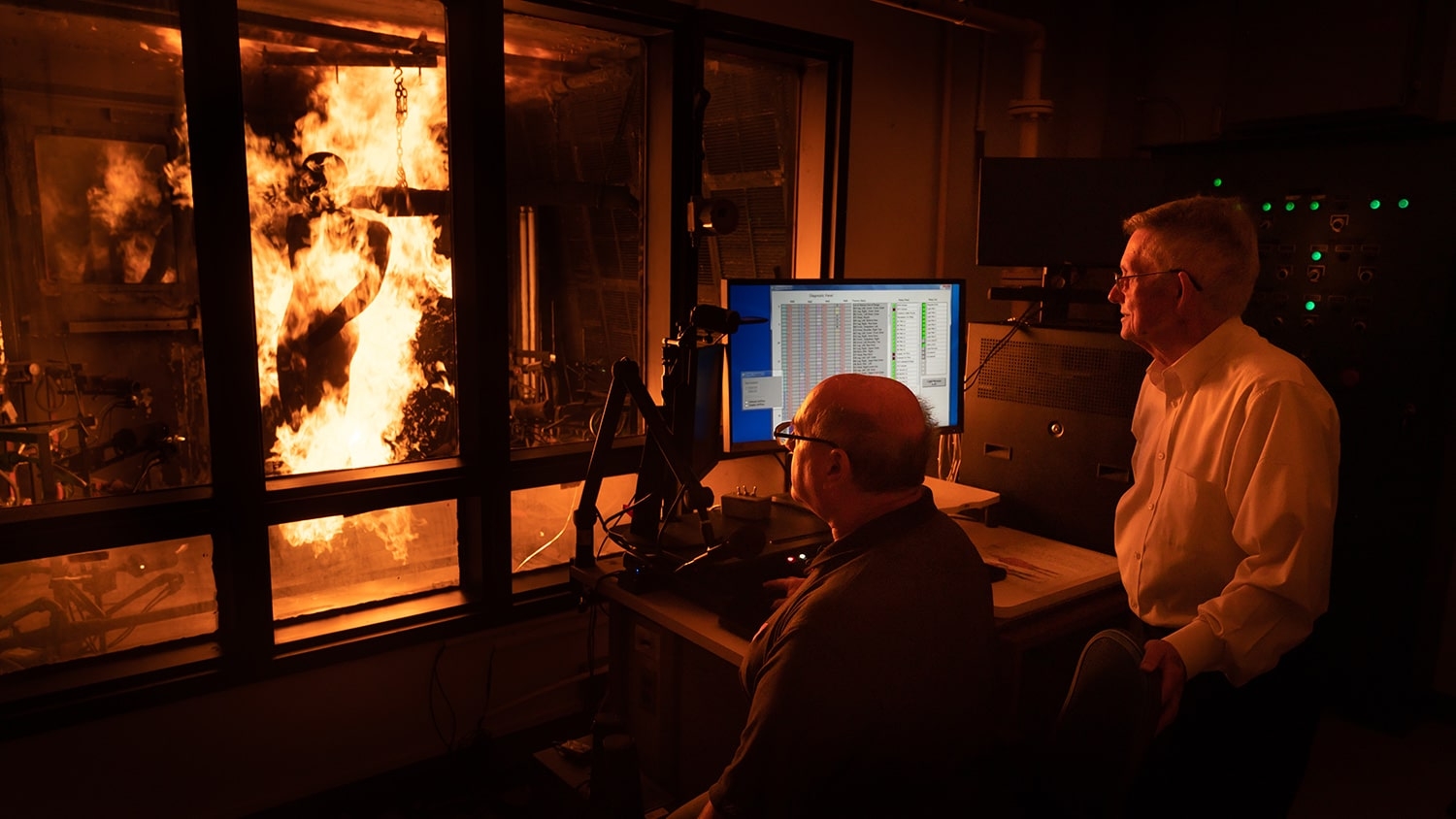Civil Engineering Alumnus Establishes First Named Department Head in College of Engineering
Gifts from Lawrence A. Twisdale, Jr. ‘69, ‘70 and his wife, Fran, will elevate the Department of Civil, Construction, and Environmental Engineering.

Lawrence (Larry) Twisdale, Jr. ‘69, ‘70 built his career in risk and reliability analysis of civil engineering systems.
A two-time alumnus of NC State University’s Department of Civil, Construction, and Environmental Engineering (CCEE), he was one of the national leaders in using probabilistic simulations in the modeling and analysis of 3-D structural systems, including nuclear power plants, to ensure their safety and reliability.
When he decided to make a gift to CCEE, he took time to learn how to designate gifts that could generate broad impacts for the department.
“I want NC State to be the best — academics, research, teaching, athletics, everything — and be recognized for it,” he said. “My NC State civil engineering education was excellent. I want to help the department grow, become more connected to alumni, and improve its national stature in academics, teaching and research.”
Twisdale and his wife Fran made gifts totaling $4 million this year to establish the first named department head position in the College of Engineering, as well as a second named Twisdale professorship in CCEE. He has also indicated plans for an estate gift aimed at attracting talented faculty and students to the department.
In short, these gifts help strengthen the department at multiple levels.
“Larry’s generosity exemplifies the profound connection between our alumni and the department,” said Jacqueline MacDonald Gibson, head of the department. “His philanthropic spirit inspires our researchers, donors and students, reinforcing the upward trajectory of our department, college and university. We are deeply grateful for his belief in our mission.”
As of today, Gibson holds the title of the Twisdale Family Civil, Construction, and Environmental Engineering Department Head.
“The impact of this gift will extend for generations to come, providing new and recurring flexible resources that Jackie and future department heads can direct toward their vision and areas of greatest opportunity or need — from enhancing the student experience and investing in research, to raising our profile, recruitment activities, and alumni engagement,” said Jim Pfaendtner, Louis Martin-Vega Dean of Engineering.
Twisdale grew up in Hickory, North Carolina, and like many future engineers, loved science and math. His parents were passionate about education, and he was accepted to Duke University, the Georgia Institute of Technology and NC State.
“About 10 of the smartest math-science guys in my graduating class at Hickory High School were going to NC State,” he said. “One of my good friends and I decided to room together, and so, NC State it was. It turned out to be a great decision in many ways.”

As a freshman, he joined Phi Kappa Tau Fraternity — “an efficient and fun way to go through college and create lifelong brothers,” — resulting in a well-rounded college life of brotherhood, academics, inter-fraternity athletics, social events and community service. He and Fran still spend time with his fraternity brothers and their spouses, especially during football season.
Twisdale graduated with a B.S. in civil engineering in May 1969 at the top of his class and accepted a position with Shell Oil Company. But by September, he was back at NC State to pursue his Master of Civil Engineering (MCE).
The August after he graduated, his dad called Professor Jehangir Mirza to inquire about the MCE program. Mirza, who taught Twisdale’s senior-level structural analysis course, told him there was still a fellowship available for his son.
“My dad was instrumental in convincing me to return to graduate school now instead of later, which turned out to be very beneficial to my career,” he said. “I am still amazed that Dad contacted the school and was able to get in touch with Dr. Mirza.”
In 1970, Twisdale received another fellowship, this one for his Ph.D. from the University of Illinois Urbana-Champaign’s top-ranked civil engineering department. He took several cutting-edge civil engineering courses, including structural reliability, optimization and Bayesian decision analysis.
“I really enjoyed these courses as they provided a framework to analyze the risk and safety of civil engineering facilities subjected to extreme hazards, such as tornadoes, hurricanes and explosions,” he said. “Today, these methodologies are broadly used to calibrate structural code-based design parameters for uncertain environmental loads and structural performance.”
These methods became a cornerstone of his career.
In 1972, Twisdale took a job in Raleigh with Carolina Power and Light, now Duke Energy, to support the company’s growing number of nuclear power plants. He wrote a successful research proposal to the Electric Power Research Institute on how to build plants to safely resist tornadoes to a very high reliability, greater than 0.99999 per year.
“CP&L wasn’t quite sure what to do regarding research funding from outside the company,” he said. “But they allowed it, and I assembled a team to begin work on the project.”
His team’s work resulted in TORMIS, a plant- and site-specific methodology embodied in a Monte Carlo simulation code that could evaluate the probabilities of failure across multiple plant structures, systems and components for any location in the contiguous U.S.
“TORMIS, with certain updates over the years, is still being used today,” he said.
That six-year project launched his career specializing in structural reliability, with applications in wind engineering, nuclear power and military protective structures.
Twisdale founded the Southeast Division of Applied Research Associates Inc. (ARA) in 1982, which is now ARA’s largest office with more than 300 employees. He published over 150 technical reports and papers and led many significant projects, including site-specific risk analyses for 40 nuclear power plants in the U.S. and Canada; the development of engineering-based tornado wind speed maps; and the creation of multiple software tools. The latest one enables field-based engineering estimates of the tornado wind speed probability distribution functions, using observed damage states and observed as-built structural details of individual single-family residential structures.
“His work served not only his personal career but also helped generate hundreds of jobs for others,” Gibson said.
When Twisdale looks back on his career, he recognizes the way NC State professors — including Mirza and John Ely, his undergraduate advisor — supported his success. Ely encouraged him to take a computer programming class as an elective, which later set him on a path of computer modeling and system simulations.
In Gibson, he sees a leader who is motivated to raise the profile of the department. He was impressed by her systematic approach to identify Cassie Castorena as the recipient of his first named professorship, the Lawrence A. Twisdale Jr. Distinguished Professorship. Her research focuses on advancing the engineering and sustainability of asphalt, which represents the largest civil infrastructure investment in the U.S.
“I am honored to receive this recognition,” she said. “It serves as a great inspiration to continue to pursue impactful research.”
Twisdale wants to see more of that kind of faculty support and recognition. He believes that philanthropy plays a critical part in the department’s work to elevate its reputation, attract the best students and faculty, and pursue research that makes significant impacts locally and nationally.
“A department needs sufficient funding for endowments, professorships, fellowships and scholarships to realize its potential and to strengthen its faculty and students,” he said. “I believe this gift will help in that regard. We have a large alumni base, so all gifts, large and small, can aggregate to something significant over time.”


